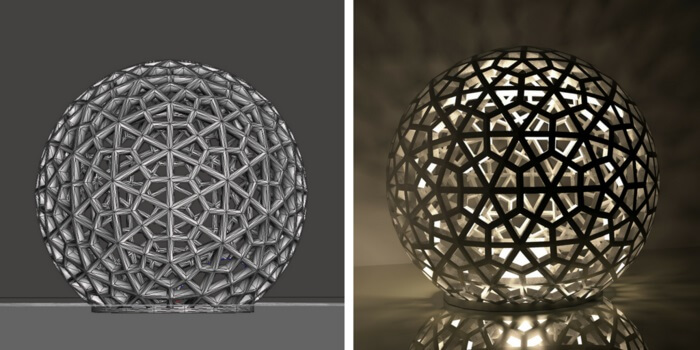1. Preparation of the 3D model
Not every STL file guarantees that the model is printable. STL files only contain the information that the 3D printer reads. Simple design guidelines are it’s impossible to print something if the thickness of the wall is 0 and it’s also essential to make sure the walls don’t have any holes, ex. faces or polygons missing.

The first picture shows 0 wall thickness of the 3D design. The second picture is missing faces of some walls. The third picture is an example of a well prepared STL file
Tip: it’s easier if you scale the original design to the size you want it to be 3D printed before saving it as an STL file format.
2. STL Resolution
Optimizing your STL resolution is a very important step. Indeed, the smoother the surface, the better the print, BUT it also depends on the 3D printing technology you use. 3D printers are limited by the thickness of the layer, so before you add too many vertices, learn about the 3D printing technology and material you want to use. The more complex your object, the bigger the file size, and that can create problems not only with sharing the file with a 3D printing service but also for the 3D printer. Also, make sure to optimize your STL files, it can bring the costs of production down and waste less material. To sum up: you need to adjust the complexity of your object accordingly to the thickness of the layers of the 3D printed model. Setting right STL Resolution is the key factor here. The printer won’t be capable of 3D printing models’ surface if it’s too detailed with the limitation of layer thicknesses.

The first picture shows an STL file before optimization, second after and the third one is a render of the 3D model.
3. Saving the STL files
Depending on your 3D software, there are several ways to save or export options for STL files. We prepared for your knowledge based guides through different CAD programs as well as tutorials on how to prepare the model for 3D printing and export your STL file:
- Blender
- Select File > Export > Select STL Check the Scene Unit box > Click OK
- Rhinoceros
- File > Save As > STL > OK
- SolidWorks
- File > Save As…Select File > In the File Format select STL > Click OK Options > Resolution > Fine or Custom > OK
- SketchUp
- Download SketchUp to DXF or STL plugin Start SketchUp Tools > Export or DXF or STL files
- MeshMixer
- Select the 3D Model Press Enter The export window will pop up Select STL > Click Save OR File > Click Save > STL
- Autodesk Inventor
- Select File > Print > 3D Print Preview Save Copy As… > STL > Click Save
- Alias
- Sculptris
- This program does not support STL files export. Your best option is to convert an OBJ file in MeshMixer or Slicer software.
- Catia
- You file has to be a CATPart Select File > Click Save As > Choose STL files
- SpaceClaim
- FreeCAD
- Switch to mesh workbench Select the Solid to be meshed in the tree view Meshes > Create Mesh from the shape. Select one mesh type and specify the options > OK. Mesh object will be created > Right click on it > Export mesh > STL > Click Save
- Fusion 360
- File > 3D Print. Refinement options > export settings. Output > untick ‘’Sent to 3D Print Utility > Click OK > Click Save
- Inspire
- File > Click Save As > STL
- 3Ds Max
- Menu > Export > Select STL
- Wings 3D
- Select File > Export > STL
- TopSolid
- Go to menu bar on the right. Right click on the part Export > Select STL > Click OK
- Mathematica
- 3D Builder
- Ctrl + S > STL > Click OK


 Connect with Google
Connect with Google Connect with Facebook
Connect with Facebook

